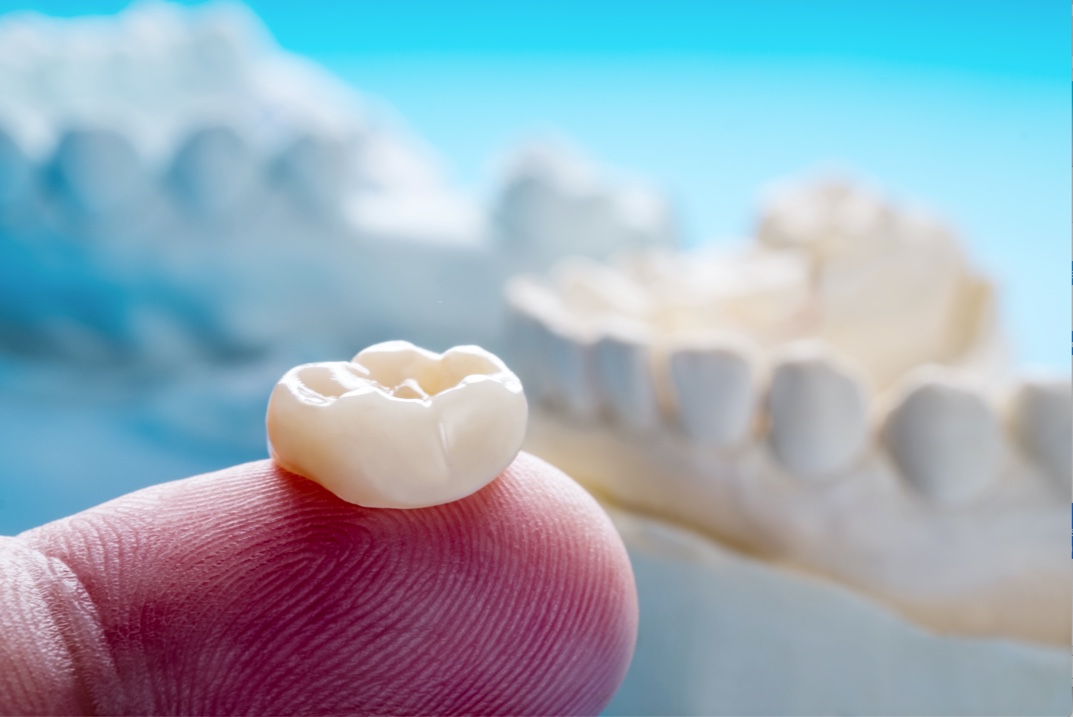When a dental crown loosens, it can be a major annoyance, affecting both your oral health and your self-esteem. This protective cap, expertly crafted to restore the functionality and aesthetics of a damaged tooth, is vulnerable to wear and tear over time, leading to a frustratingly loose fit. If you find yourself facing this dental dilemma, don’t despair. Read on to discover a comprehensive guide on how to fix a loose dental crown, empowering you with the knowledge and options to regain a secure smile.

Image: www.wikihow.com
Understanding Loose Dental Crowns
Dental crowns, fabricated from durable materials like porcelain or metal, are designed to encase and reinforce weakened or damaged teeth. They are a popular restorative solution, effectively restoring the tooth’s shape, size, strength, and appearance. However, despite their durability, crowns can become loose for various reasons, including:
- Natural wear and tear: The constant forces of chewing and biting can gradually loosen the cement that bonds the crown to the underlying tooth.
- Trauma: A sudden impact to the mouth, such as a blow or a fall, can dislodge or weaken the crown’s hold.
- Underlying decay: Dental decay can weaken the tooth structure beneath the crown, compromising its stability.
- Poor dental hygiene: Neglecting proper brushing and flossing can allow plaque and bacteria to accumulate around the crown, undermining the cement’s bond.
- Improper fit: An ill-fitting crown can exert unequal pressure on the tooth, leading to a loose fit over time.
Signs of a Loose Dental Crown
Recognizing the telltale signs of a loose dental crown is crucial for prompt attention. If you experience any of the following, it’s advisable to schedule an appointment with your dentist:
- Sensitivity to hot or cold temperatures: A loose crown may allow gaps between the tooth and the crown, allowing extreme temperatures to reach the sensitive tooth nerve.
- Pain when biting: Chewing with a loose crown can cause discomfort due to unstable movement of the crown on the tooth.
- Food particles getting stuck: Loose crowns can create tiny gaps where food can become trapped, increasing the risk of decay and infection.
- Crown movement: Gently wiggle the crown with your fingers to assess its stability. If it moves, it has loosened.
- Visible gaps: In some cases, you may notice a visible gap between the crown and the tooth, indicating a loss of adhesion.
Fixing a Loose Dental Crown: Options and Procedures
The appropriate method to fix a loose dental crown depends on the severity of the issue and the underlying cause. After examining your crown and assessing its condition, your dentist will recommend the most suitable course of action.
- Temporary Fix: If the crown is only slightly loose and there are no signs of underlying damage, your dentist may opt for a temporary fix to secure it in place. This can involve using a temporary dental cement or bonding material until a permanent solution can be arranged.
- Re-Cementation: In cases where the crown is still in good condition but has simply loosened due to wear and tear, your dentist can remove the crown, clean it thoroughly, and re-cement it using stronger or long-lasting dental cement.
- Crown Replacement: If the crown has been significantly damaged or the underlying tooth has decayed, a complete crown replacement may be necessary. This involves removing the loose crown, repairing or replacing the damaged tooth, and placing a new custom-made crown.

Image: www.cowelldental.com
Preventing Loose Dental Crowns
While dental crowns are designed to last for many years, certain habits and precautions can help prolong their lifespan and minimize the risk of a loose fit:
- Maintain good dental hygiene: Brush twice a day and floss regularly to remove plaque and bacteria that can weaken the cement bond.
- Use a soft-bristled toothbrush: Avoid brushing with hard or medium bristles, as they can damage the crown’s surface.
- Protect your teeth from trauma: Wear a mouthguard during sports or other activities that pose a risk of impact to the mouth.
- Limit biting on hard foods: Refrain from chewing ice or hard candy, which can place excessive stress on the crown.
- Avoid sugary foods and drinks: Limit consumption of sugary substances to protect against tooth decay, which can compromise the integrity of the tooth beneath the crown.
How To Fix A Loose Dental Crown
Conclusion
A loose dental crown can be a temporary setback, but it’s not a reason to panic. With the help of a qualified dentist, you can effectively fix a loose crown and restore the comfort and confidence of a secure smile. By understanding the signs and causes of a loose crown, taking preventative measures, and seeking prompt professional attention, you can maintain your crown’s stability and prolong its longevity for a healthy and aesthetically pleasing smile for years to come. Remember, the journey to a secure dental crown begins with a single step towards informed care.